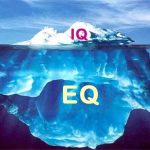 Brought up by teachers and with a precocious reading habit, school was easy for me as a child. I found book learning straightforward and thought this was the only way to learn that mattered…until my driving test, an important milestone and practical matter in rural East Anglia. I failed it dismally several times, and on one occasion was driven back to the test centre by the examiner on his insistence for our safety! Around this time I also fell madly in first-love, and discovered the world of connection and intensity of feeling within the body. The world of love knocked me off the scholastic pedestal, and bought me to my senses. Sadly, inexperienced in relationships, I soon “failed” in this area too. It turned out there was a lot I didn’t know and this knowing was visceral!
Brought up by teachers and with a precocious reading habit, school was easy for me as a child. I found book learning straightforward and thought this was the only way to learn that mattered…until my driving test, an important milestone and practical matter in rural East Anglia. I failed it dismally several times, and on one occasion was driven back to the test centre by the examiner on his insistence for our safety! Around this time I also fell madly in first-love, and discovered the world of connection and intensity of feeling within the body. The world of love knocked me off the scholastic pedestal, and bought me to my senses. Sadly, inexperienced in relationships, I soon “failed” in this area too. It turned out there was a lot I didn’t know and this knowing was visceral!
What these two hard lessons showed me is that there are other ways to be smart than cognitively “knowing about”. Driving and social relations are not things you can learn from a book, but are examples of what neuroscientists would now call implicit, procedural or embodied learning. Leadership, relationships and life itself is an embodied matter. The body is our unconscious and it reveals itself through habit and intuition. If we limit ourselves to what we know about, we limit access to what we really know.
In the bodily arts I have since studied, like martial arts and dance, this is a given, yet in the modern work environment people often try to ignore the body. I have found that true effectiveness through responsiveness and creativity only comes through relaxing and letting the intuitive bodily response flow. In Zen this is known as Mushin or “no-mind”. It is familiar to actors, comedy improvisors, lovers and great leaders. In this way the body is a gateway that we enter through not knowing.
The body is a source of both mystery and wisdom. This may be surprising to those accustomed to viewing the body simply as a cart that carries the brain around, so I should first explain that when I say body I do not just think of a machine, but rather an intimate part of who we are. How we move and how we stand is the way we are in the world. How we are embodied – meaning how the subjective body is alive with awareness, breath and movement – is how we attempt to stabilise being. The illusion of knowing both the world and ourselves is maintained in our literal leanings and movements patterns – we have habits, and the body keeps these in place. Our perceptions, thinking and emotional life not only change the body, but the body also changes these areas. This idea is now supported by a wealth of new scientific evidence*.
From the perspective of not knowing, our bodily predispositions – solidifications of past events – take us away from the reality of what actually is, and from flexibility of response. If we are not in dialogue with what may be, but rather repeating patterns from the past we cannot respond with power and grace. As an embodiment teacher I have come across many models for how people “lean” – embodied archetypes – are you more warrior or lover by disposition for example? – four elements – are you more fire of water? – and bodily versions of standard psychometrics like Myers Briggs – extroverts are not hard to spot for example! What matters in relearning not-knowing in the body is to identify one’s tendencies and then expand one’s range and therefore freedom. Bodily preemptive certainty is a prison, flexibility power.
A simple exercise is to note what posture and movement style you take when you take a position – when you know. Now move, shake yourself out and try a new stance to the subject. A different way of standing and moving is a different way of being that will help you let go of entrenched positions and see something from a new angle.
*much of which is gathered in the very readable “Rip It Up” by Professor Richard Wiseman.